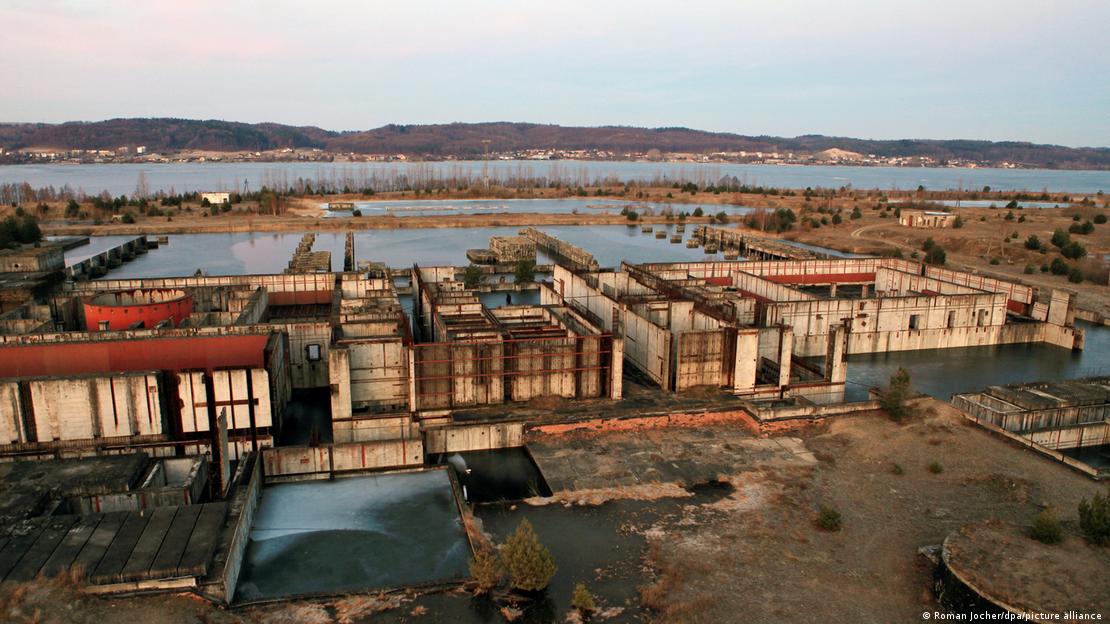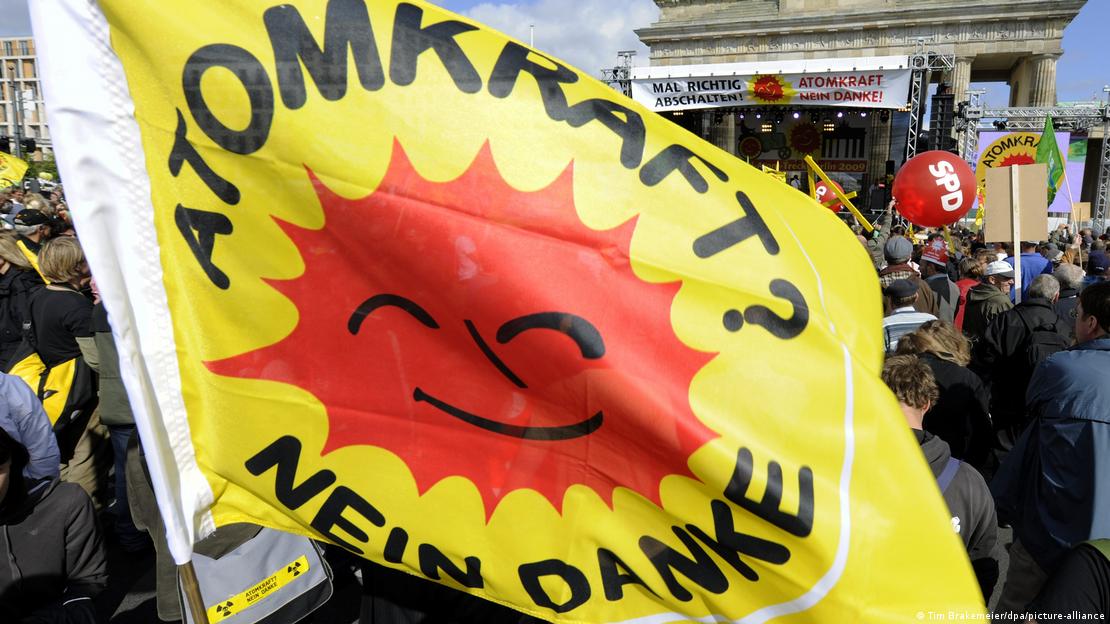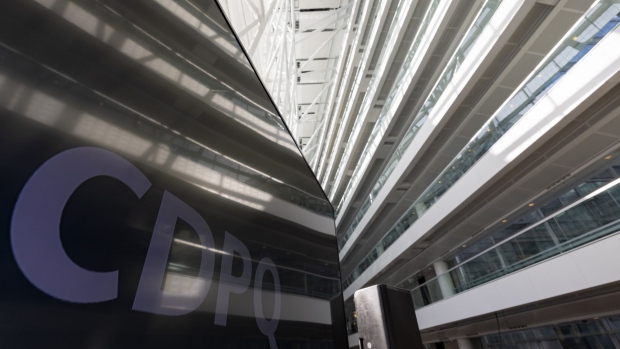Poland is hoping to get its first-ever nuclear power plant online by 2033 with the help of a US firm. Russian aggression has pushed forward the long-awaited plan.
A US firm has beaten out its French and South Korean competitors in landing a contract to build Poland's first-ever nuclear power plant, Polish Prime Minister Mateusz Morawiecki said on Friday.
Westinghouse Electric Company was granted the multi-billion euro deal as Poland seeks to secure its energy supplies independent of Russian gas.
"We confirm our nuclear energy project will use the reliable, safe technology of [Westinghouse]," Morawiecki wrote on Twitter.
Washington celebrates announcement
US Energy Secretary Jennifer Granholm welcomed the decision, calling it a "huge step in strengthening our relationship with Poland for future generations to come."
"I think it sends a clear message to Russia that the Atlantic alliance stands together to diversify our energy supply... and to resist Russian weaponization of energy," Granholm also said.
Westinghouse outbid French company EDF and South Korea's state-run Korea Hydro & Nuclear Power (KHNP).
"This is a huge deal because this is not just about a commercial energy project, it is about a way we will define ... interdependent security for decades to come," a senior US government official told reporters.
Poland's long-term nuclear plans
Warsaw has been eyeing up development of its own civil nuclear capacity for years but was spurred into action by the Russian invasion of Ukraine and subsequent standoff with NATO, of which Poland is a member.
Poland has one of the most carbon-intensive energy networks thanks to its heavy use of coal.
But it hopes to meet between 25% and 36% of its energy needs with the up to six nuclear reactors it is planning to build by 2040.
Warsaw wants its first nuclear power station up and running by 2033 and has selected the village of Choczewo near the Baltic coast for the location.
The EU recently categorized nuclear energy — as well as energy from burning natural gas — as "green" despite heavy pushback from countries such as Germany and Austria.
ab/wd (AFP, Reuters)
After several failed attempts to build its own nuclear power capacity, Poland looks ready to make the leap. Like with buses, Poles have waited years for one nuclear power plant and then two come along at once.
Poland is likely to choose the United States engineering firm Westinghouse Electric to build its first nuclear power plant and provide 49% equity financing for the project. State-owned Korea Hydro Nuclear Power (KHNP) may also be involved in a separate and parallel private nuclear project, Polish Deputy Prime Minister Jacek Sasin said earlier this week.
Warsaw has also been talking to France's state-owned EdF utility which has built and operates the country's nuclear power plants.
After years of shelved plans to build a civil nuclear capacity in Poland from scratch, the energy crunch caused by the war in Ukraine, lower gas supplies from Russia and lack of immediate renewable substitutes, have kicked the issue back up the political agenda.
The government is slated to announce who will build the first plant and where at its sitting in early November.
Poland plans to build four to six nuclear reactors by the mid-2040s. The planned facilities could meet between 25% and 36% of annual domestic energy demand.
Nuclear power is a key part of Poland's plan to reduce the large share of coal and lignite in electricity generation. Its electricity grid is one of the most carbon-intensive in Europe.
A special purpose vehicle called EJ1 set up by Poland's largest energy group Polska Grupa Energetyczna is leading the siting and development plans. In 2021, the functions of EJ1 were transferred to a new state-owned entity, Polskie Elektrownie Jadrowe (PEJ).
Work on building the reactors — each boasting a capacity of 1 to 1.5 gigawatt (GW) — is slated to start in 2026, with the planned completion of the first reactor by 2030. All six of them will be connected to the grid by 2040 with total capacity of 6-9 GW.
Last December, PEJ announced its preferred location for the first commercial plant as the Baltic Sea coastal commune of Choczewo near Gdynia at a site called Lubiatowo-Kopalino.

Is the US offer the likely winner?
Some believe it is a foregone conclusion that Westinghouse Electric will win the tender, after a recent meeting of senior Polish government representatives with US Secretary for Energy Jennifer Granholm reportedly settled questions related to offset agreements in Poland's favor.
Last July, Westinghouse launched so-called front-end engineering and design work under a grant from the US Trade and Development Agency to go ahead with the nuclear energy program in Poland.
Price is also key. Korea's KHNP offered to build six 8.4 GW reactors for $26.7 billion (€26 billion). The US offer for six 6.7 GW reactors is $31.3 billion. EdF's bid is reportedly the most expensive — depending on the variant, it wants $33 billion to $48.5 billion for four to six reactors, with a total capacity of 6.6 to 9.9 GW, according to Polish media reports.
In a change of policy, and clearly designed to assuage doubts on the Polish side, Elias Gedeon, the manager responsible for project commercialization at Westinghouse, told the Polish newspaper Rzeczpospolita that financing includes participation of the US state-owned export lender, EXIM Bank, and equity from Westinghouse and its partner Bechtel.
Greenpeace nuclear energy expert Jan Haverkamp, however, harbors doubts about Westinghouse's offer. "There is a question whether Westinghouse will be able to deliver properly on its offer. Westinghouse has a precarious financial situation," he told DW.
PGE and Poland's largest private energy group, ZE PAK, are reportedly planning to sign a letter of intent with Korea's KHNP to build another, private, nuclear plant with Korean APR 1400 reactors. The signing of a letter of intent is scheduled for October 31. The Koreans have reportedly promised to transfer technology, which the Americans were reportedly cautious of doing.
Poland has moved closer to ending reliance on coal after the government, the country's largest mining firm and unions agreed to phase out all coal mines by 2049. Under the plan, the Patnow thermal power plant in central Poland is scheduled to shut down in late 2024.
Zygmunt Solorz, owner of ZE PAK and Poland's richest man, has reportedly pushed hard in the government for cooperation with KHNP.
Pawel Gajda from the Krakow-based Mining Academy thinks choosing two different nuclear technologies would have its advantages. "It would be a better solution from the point of view of reliability and thus energy security and reduce the risk of a situation where, as a result of some defect, it is necessary to temporarily discontinue many power units at once," he told the Polish newsite WNP.PL.
Polish experts also downplayed possible European Commission opposition to selecting the US bid as it would mean a company from outside of the bloc winning a major energy tender.
One Warsaw-based energy analyst, who prefered to remain anonymous because of his company's policy, said that he would expect "a sort of 'hallelujah'" from Brussels that there will be a "proper replacement for all coal-fired generation in Poland."
The bank analyst also dismissed fears that Germany might oppose a nuclear plant to be built in its neighborhood. "Both alleged locations are away from the German border. I do not think there will be a negative reaction. The Czechs and Belgians keep their nuclear plants closer to the German border."

\Tim Brakemeier/dpa/picture-alliance
Another false dawn?
Wladyslaw Mielczarski, a professor at the Technical University of Lodz, sees the Polish government's nuclear plans as a distraction from current energy problems.
"Most experts see the talks on nuclear power as a preelection campaign and the distraction of public attention from current energy supply problems and a lack of coal delivery for domestic users," he told DW.
The Warsaw bank analyst DW spoke to on condition of anonymity is more sanguine. "Poland's current nuclear plans are very realistic. There is no alternative comparable in output size over the medium to long term. Poland has a gap in its long-term energy mix and NPPs are considered to be the right technology to fill it," he said.
This long-term gap has emerged because renewable energy sources are still underdeveloped in Poland and the government has been lukewarm on policies to drive ahead with wind power or photovoltaic energy.
Greenpeace's Haverkamp is far from convinced by the nuclear option, saying Poland's ambitions are based on several unrealistic expectations. "The issue of costs, piled on unrealistic expectations on issues of financing, based on unrealistic expectations of market changes delivers in the end an unfinanceable project."
Haverkamp even assumes that the project was dear to the ruling ruling Law and Justice (PiS) and the opposition Civic Platform (PO) "because it finances sufficient friends and relations in the area of consultancy and regional/local governance."
"But at a certain moment it will hit a wall," he said, and that there is "less than a 1% chance that nuclear power plants in Poland will be added to the grid before 2050."
Edited by: Uwe Hessler

